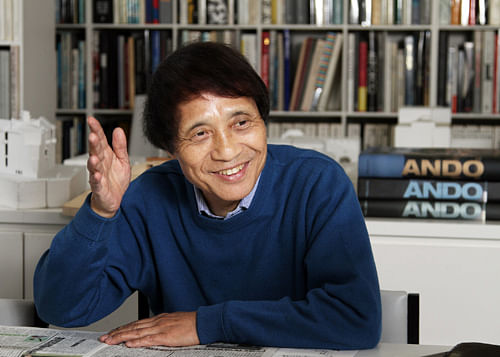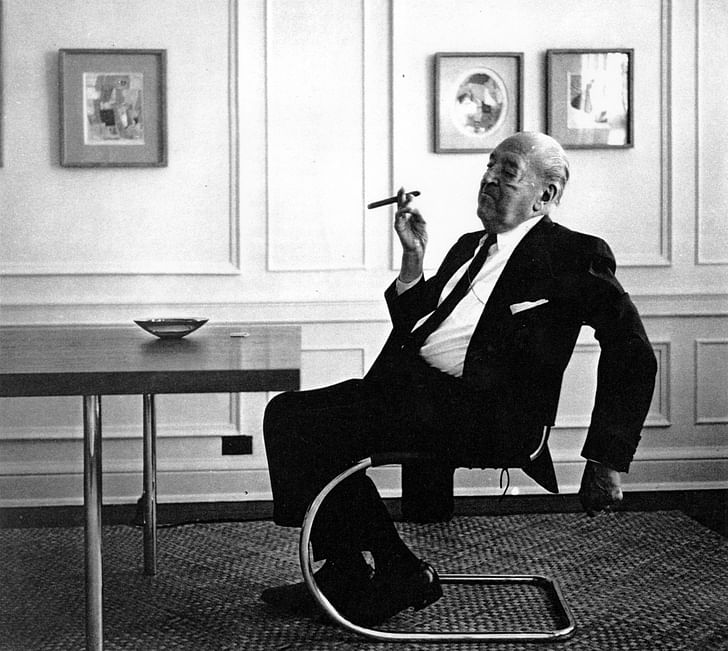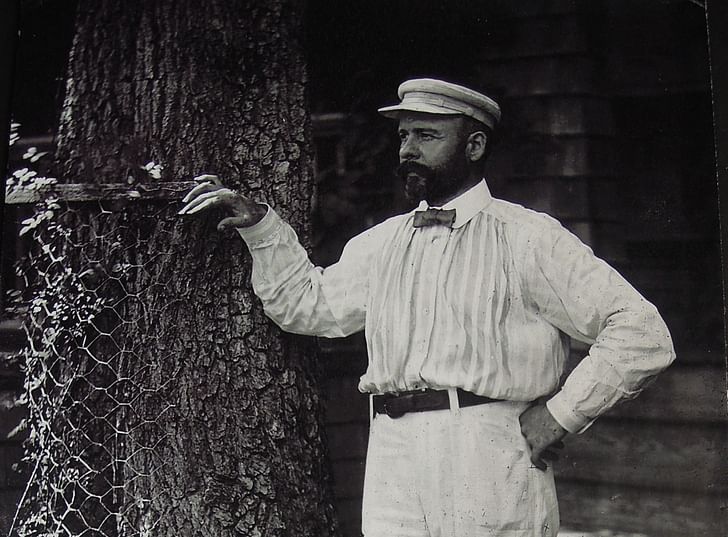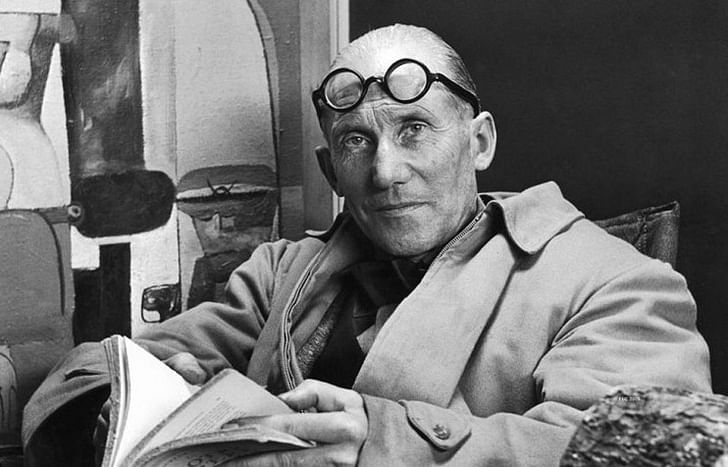

Don’t tell the architectural students with six figures of debt, but that education of theirs might not be entirely necessary—especially when one looks at the ranks of famous architectural dropouts and autodidacts. These accomplished designers either didn’t complete their formal education or simply forged their own path by virtue of teaching themselves how to design. No matter how they dodged formal education, all of these figures pursued a passionate love of their field.
Tadao Ando
Among the most respected architects in the world, Tadao Ando couldn’t afford an official architectural education, so he began to read books in order to teach himself. As a result, his work is idiosyncratic yet masterful, from the Akita Museum of Art to the Langen Foundation. In an interview with Surface magazine, he spoke of his autodidactism:
“They say that age 15 is the critical year in life. It’s the most sensitive. I had a wonderful math teacher who really put everything he had into teaching math. The carpenters I saw who kept working frantically, even forgetting lunch, also moved me. I was very impressed by them. These I made a point to go out and look and study the old buildings two elements—math and carpentry—converse in architecture. That was my starting point. I could not go to university; I couldn’t even afford to go to an architectural trade school. The only option left was to study by myself. I had to think and act by myself. One thing I decided to do was to read architecture books. I’m from Osaka, which is located about half an hour from Kyoto and Nara. Every Sunday I made a point to go out and look and study the old buildings in the region. One thing about architecture is that the more you look at good buildings, the more love you have for them. That’s how I was drawn into architecture.”

Ludwig Mies van der Rohe
Ludwig Mies van der Rohe once noted in a 1948 interview that “I don’t want to be interesting. I want to be good.” In terms of training, he pursued that goal by acquiring actual field experience in lieu of formal education. Coming from a family of German stonecutters, Maria Ludwig Michael Mies (he later changed his name to Mies van der Rohe—his mother's Ironically, Mies created a three-step architectural curriculum based on his own design techniques maiden name was Rohe and he just added 'van der' to sound more sophisticated) spent the majority of life at work, eschewing the pricey and removed abstraction of education in favor of paid positions with various interior decorators, designers, and architects. He designed his first home, the Riehl House in Potsdam, at age 21, but still felt the need for additional training. At age 23 he started working for then leading architect Peter Behrens, and continued refining and pushing his aesthetic sensibility until his death in 1969 at 83. Ironically, Mies created a three-step architectural curriculum based on his own design techniques at the Illinois Institute of Technology in the mid-twentieth century, some components of which are still taught today.

Louis Sullivan
Widely considered to be the father of the modern skyscraper, Louis Sullivan only spent about a year and a half total on his formal education: there was a year at MIT, and then six months at the École des Beaux-Arts in Paris, after a span of working for Frank Furness and William Le Baron Jenney. He spent the rest of his career partnering and un-partnering with various designers including Dankmar Adler, with whom he designed the Wainwright Building in St. Louis, MO and the Guaranty Building in Buffalo, NY. And despite his erratic education, Sullivan ultimately wound up writing several books on his architectural philosophy, including The Autobiography of an Idea.

Eileen Gray
Although Irish furniture designer and architect Eileen Gray took painting classes at the Slade School of Fine Art, her formal education was sparing and infrequent. She instead appeared to drift into opportunities, becoming inspired by her surroundings. Her 1913 lacquer-based work was informed by the experience of the owner of a lacquer shop in London, who showed her the fundamentals of the trade. In later decades, she partnered with Jean Badovici to design the E-1027 house in Southern France, and ultimately created several notable architectural works, including the Tempe à Pailla in the French Riviera. Her furniture is now considered to be among the finest from the 20th century.

Buckminster Fuller
Conceptual genius and architectural enthusiast Buckminster Fuller—who started his career building light-weight, fireproof housing with the Stockade Building System, graduated to interior design and eventually patented the geodesic dome—found the courage to pursue his paradigm-shifting visions on the night he seriously contemplated committing suicide. Unsurprisingly, he also had a rocky relationship with traditional education. He was constantly getting tossed out of Harvard only to grudgingly win his way back in again. Pre-empted by World War I, he never did officially graduate, but then he never expected that he would. As he described his education in a 1962 lecture:
“My father died when I was quite young, and though my family was relatively poor I had come to Harvard from a preparatory school for quite well-to-do families. I soon saw that I wasn’t going to be included in the clubs as I might have been if I had been very wealthy or had a father looking out for me, for much of the clubs’ membership was prearranged by the clubs’ graduate committees… I was not aware up to that moment that there was a social class system I was now considered a social maverick and that there were different grades of citizens… I became panicky about that disintegration of my idealistic Harvard world, went on a pretended lark,’ cut classes, and was ‘fired.’ Out of college, I went to work and worked hard. In no time at all, reports went to Harvard that I was a good and able boy and that I really ought to go back to college; so Harvard took me back. However, I was now considered a social maverick, and I saw none of my old friends; it hurt too much. Again I cut classes, spent all my year’s allowance, and once more was ‘fired.’ After my second ‘firing’ I again worked very hard. If World War I hadn’t come along, I am sure the university would have taken me back again, and I am sure I would have been ‘fired’ again. Each time I returned to Harvard I entered a world of gnawing apprehensions, not an educational institution, and that was the problem.”

Charles-Édouard Jeanneret-Gris, aka Le Corbusier
Much like Tadao Ando, architectural giant Le Corbusier owes his education largely to an inspiring early teacher and his copious reading of books. According to an article written by Paul Turner, Le Corbusier’s drawing teacher Charles L’Eplattenier, who taught him at the Art School in La Chaux-de-Fonds, steered him away from a career of watchcase engraving and into a pursuit of architecture. At this same school, architect René Chapallaz later taught Corbusier architectural basics, but this was pretty much it for formal instruction: Corbusier took up the slack by acquiring numerous books, traveling extensively, and working for notable practitioners including Auguste Perret. Despite his lack of a traditional certificate, Le Corbusier eventually returned to his old school to teach during World War I. His legacy is the substantial re-imagination of the field of architecture.

Frank Lloyd Wright
For a man who would spend much of his life in the live-work-teach environs of Taliesin, Frank Lloyd Wright was officially a drop-out, having only completed a year at the University of Wisconsin at Madison. He was educated primarily by working in the offices of others, including fellow dropout Louis Sullivan. Although he came to depend on The Frank Lloyd Wright School of Architecture at Taliesin for a steady income in his later years, Wright’s attitude toward formal education was always somewhat skeptical, encouraging a greater emphasis on self-discovery and the pursuit of idiosyncratic vision. As he stated in 1955, “Education, of course, is always based on what was. Education shows you what has been and leaves you to make the deduction as to what may be. Education as we pursue it cannot prophesy, and does not.”
This feature is part of our special editorial focus for September 2016, Learning. Find more related pieces here.
Julia Ingalls is primarily an essayist. Her work has appeared or is forthcoming in Slate, Salon, Dwell, Guernica, The LA Weekly, The Nervous Breakdown, Forth, Trop, and 89.9 KCRW. She's into it.
25 Comments
Funny, none of the above would be allowed to be an architect without getting the M.Arch ....
Lol. Since they wouldn't be architects under today's rigid system maybe the AIA and other architects shouldn't be allowed to exploit their legacy under the umbrella of "architecture" when it suits their ego. Maybe the unlicensed designers should take them over to their team of misfits and start calling them unlicensed designers...funny the way groups try to coddle the successful dead to elevate their own agenda through association...
"funny the way groups try to coddle the successful dead to elevate their own agenda through association..."
Both sides are doing this with the same short list of architects. How about a list of all the chumps who attempted and failed categorized by academic credentials?
Architectural education, as I understood it, used to be a trade school where students went to study with masters of the craft. Or you could do this on your own in a firm.
Eventually the AIA mob gathered together an decided to make the education a requirement, probably as a money and cheap labor source. But it sucked most of the craft and creativity out of the profession... unless education becomes subsidized by the government, it's a broke system
Architecture was once an art...then it devolved into a profession...
"Let's not have a government requirement for education, let's have education subsidized by the government" seems like typing until one forgets where one began.
I'm just saying if education is a requirement, it should be totally paid for by government. Otherwise it's just what it is, a tool to keep it a rich only profession. Why do you think there is such a diversity push by arch organizations, it's to find new sources of revenue i.e. Debt
This image of Eileen Gray is from the collection of the National Museum of Ireland; it is NOT public domain.
*UPDATE FROM EDITORS* ~ the image has been replaced
There's hope for Ricky yet.
I still don't understand the desire to block people with different paths. I did my M-arch and still couldn't care less whether or not the next guy finds a different way. This obsession with controlling peoples personal development is absurd...
i still don't understand why, if you want to be an architect, you wouldn't just follow the path the rest of us followed? why do you have to be a special snowflake that gets your own unique and beautiful path to licensure?
Love
Curt, as Mr Ando states, he couldn't afford school. By your logic, Ando should have simply not become an architect because his specialness and special path offends your imaginary world where everyone has the same abilities and must adhere to the same path? He did it a different way. Perhaps there are others like him who can also do it a different way...Also, maybe the above architects are special because they followed the path most appropriate for them and thus developed appropriately...I still don't understand why anyone cares how an adult developed their abilities. If you can do something well shouldn't matter...
pales in comparisln to the Harvard drop-out list
WE ARE FROM THE DESIGN FRATERNITY................WE LEARN DESIGN FROM NATURE..........CAUSE WE ARE ITS BEST DESIGN.............
There are architects (who have done valuable works) who have gone through a formal system of education.. The only thing that is important I feel is the passion, and truth is that every designer has his/her personal journey.. And I see better architects as entrepreneurs.. Alejadro Aravena is a good example.. And to the list of this article.. Peter Zumthor and Rem Koolhaas also are good examples
Well, I am a largely self taught, self employed residential designer, historic restoration consultant, and master restoration carpenter in a state that does not require me to be licensed to do residential design. I started out with high school level architecture and drafting courses, and have some college mainly in historic preservation.
I designed my first successfully completed addition/renovation at age 14. I have hands on skills in neatly all the building trades and am a qualified electrical designer as well.
My historically sensitive renovations have won awards and been featured on HGTV back when they did stuff on historic homes. One of my highly educated customers called me an autodidact........I will take his word for it.
Glad I decided not to go to architecture school and have the creativity drilled out of me, at least that is my impression of such curriculums in the 70's when I was college age. I worked as a draftsman right out of high school, and worked with a commerical architect every day. Watching him I knew that was not what I wanted to do.
So, if they don't want me in their club, so be it, now at age 62, I only plan to do this a few more years.
Arizona has a problem with a mob established around gentleman architects (untrained) practicing through clever phone boards. It is important to not disregard the calculation training Architects now have from the NAAB. If you examine New York's current predicament with tower occupancy, it is important for an Architect to be trained enough to complete AISC 360-16 and compare that with code ASD and LFRD.
Don't forget John Pawson in the U/K. RIBA goes out of its way to point out that he is not an architect.
this is an old post, but comes up every once in a while on here or elsewhere.
The old masters are not comparable to our world really, though interesting to know that they succeeded by being born rich or privileged in other ways and working from there...
For what it is worth, Ando talks about not being able to go to university, but he was wealthy enough to travel in Europe in the 60's, something usually reserved for the elite of the time, making the parallel with Le Corbusier finding his own way seem more correct than the other narrative we usually hear (boxer fighting his way to the top). As I understand it Ando never did get a license either, like Pawson. It doesn't matter, he is still the boss. But he didnt get to where he was without having some firm foundations.
I think somehow that is what all these people truthfully represent. People who did amazing things because they grew up in a way that allowed them to find their paths. Not many of us have that. It would be nice if more of us did, and amazing if our world made it much more normal than it does.
The reality is a great percentage of people who succeed in Architecture do come from wealthier backgrounds. And that is fine. Everyone's got their advantages and disadvantages in life. There are plenty of people who come from wealthier backgrounds, get licensed as 'architects' and still suck. At the end of the day it is all about how good you are and who you get to know. Ask Heatherwick, Zumthor, Ando or Pawson himself.
The reality is a great percentage of people who succeed in Architecture do come from wealthier backgrounds. And that is fine. Everyone's got their advantages and disadvantages in life. There are plenty of people who come from wealthier backgrounds, get licensed as 'architects' and still suck. At the end of the day it is all about how good you are and who you get to know. Ask Heatherwick, Zumthor, Ando or Pawson himself.
Architecture is, in essence, a spiritual pursuit and like the religious experience of enlightenment, it is essentially a private matter. This private matter of architecture has been commandeered over the 20th century by a self-sustaining brainwashing system with its Godheads, prophets, priests, monks, monasterys, rituals, traditions, dogma, catechism, notions of sin called architecture school. Where is our Martin Luther? It's time for a reformation.
Block this user
Are you sure you want to block this user and hide all related comments throughout the site?
Archinect
This is your first comment on Archinect. Your comment will be visible once approved.